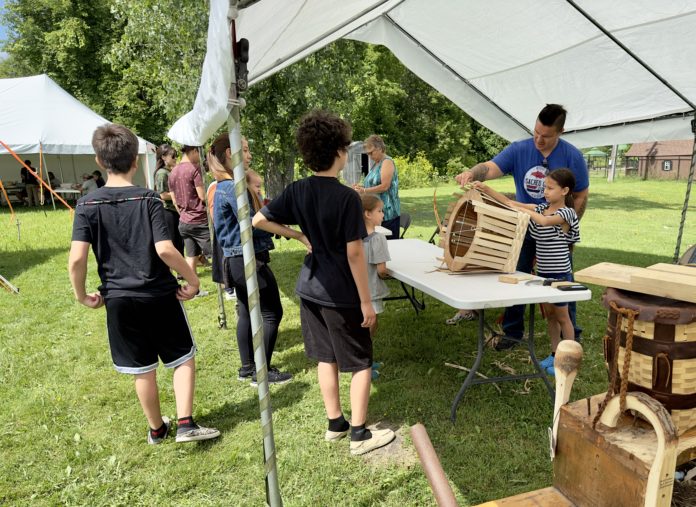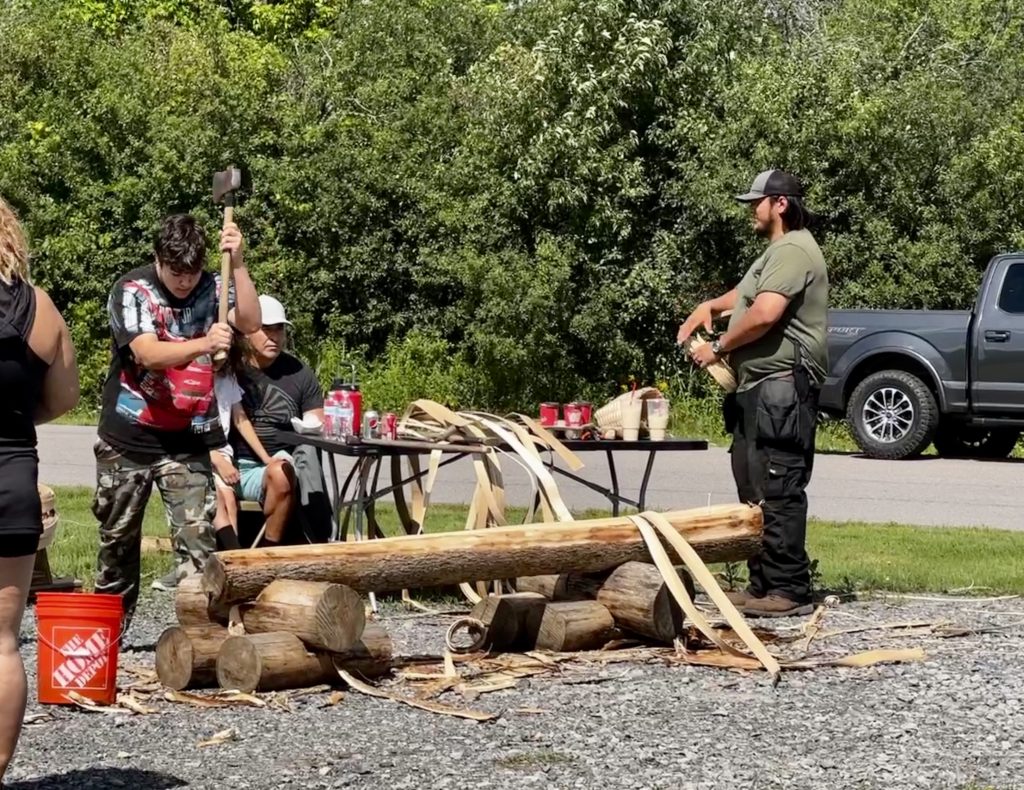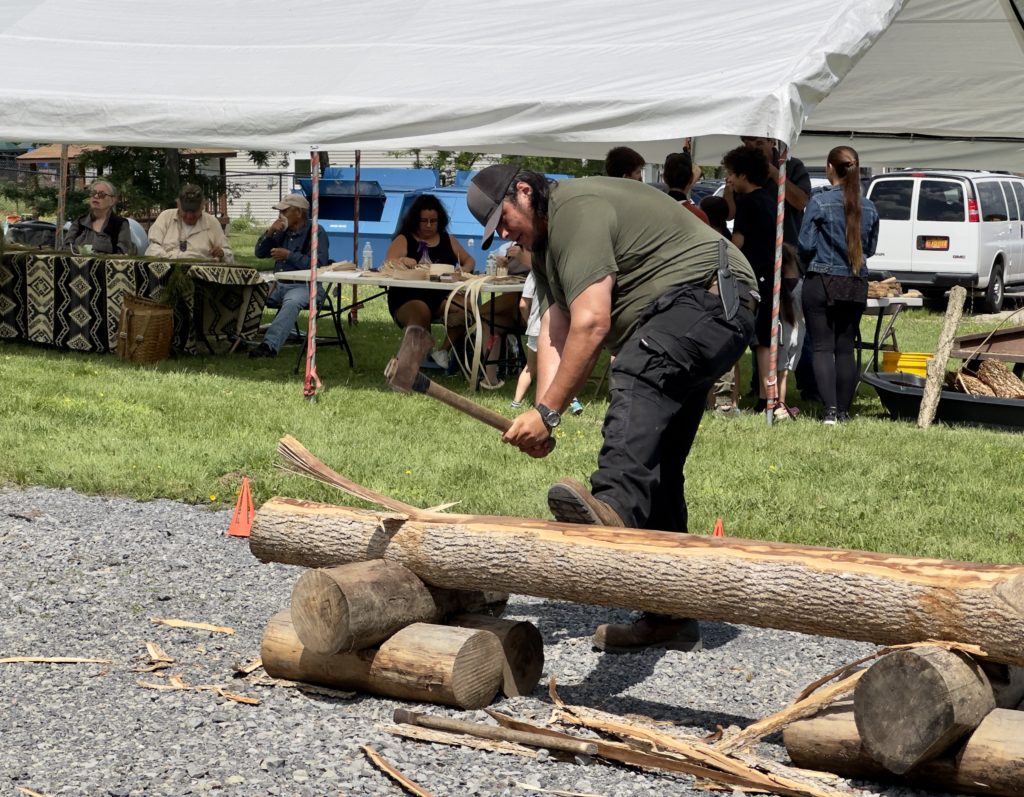“We just wanted to celebrate. We wanted to celebrate our ancestors. We wanted to celebrate history. We wanted to celebrate that it is still alive today and we wanted to celebrate all of the people that are keeping it alive and passing it down.”
– Marla Jacobs, Cultural Manager, Akwesasne Cultural Center Museum & Giftshop
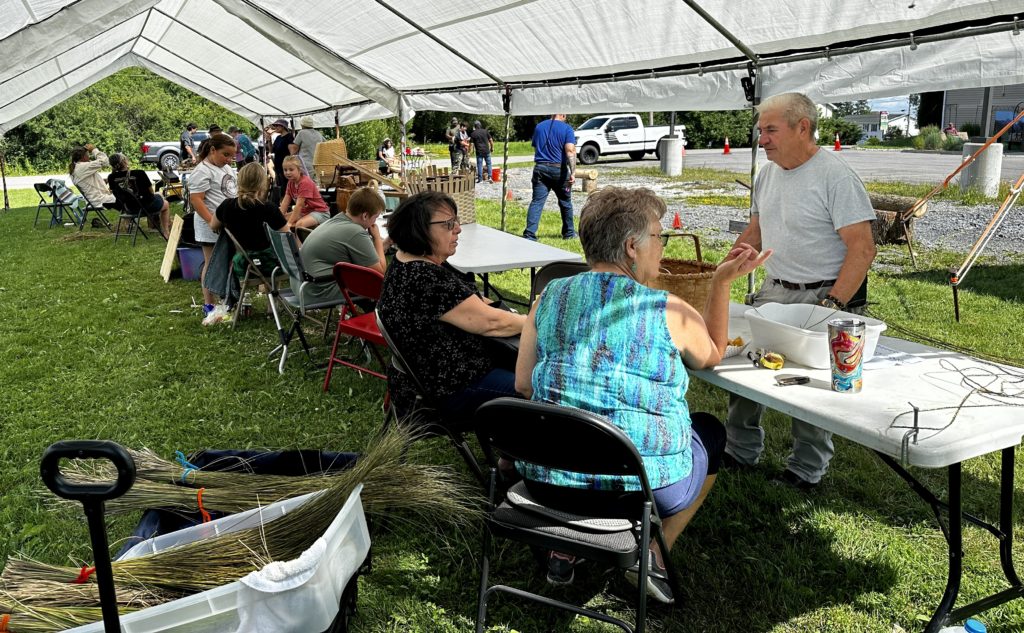
The Akwesasne Cultural Center and the Saint Regis Mohawk Tribe hosted the Akwesasne Basket Festival on July 22 & 23, 2023. There was a vendor market, classes, demonstrations, and singers.
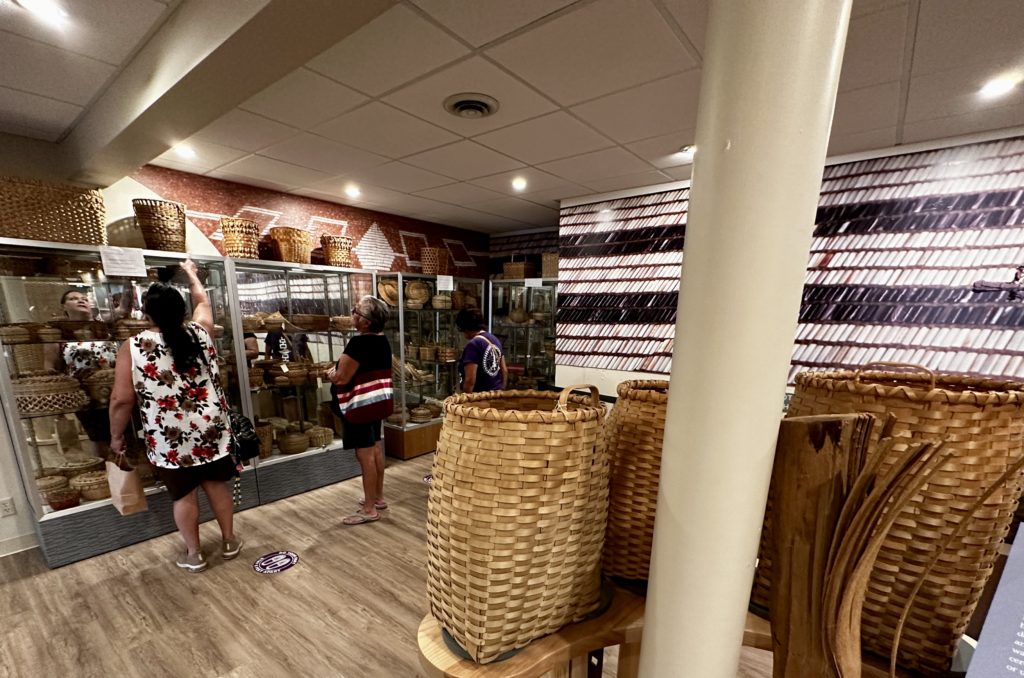
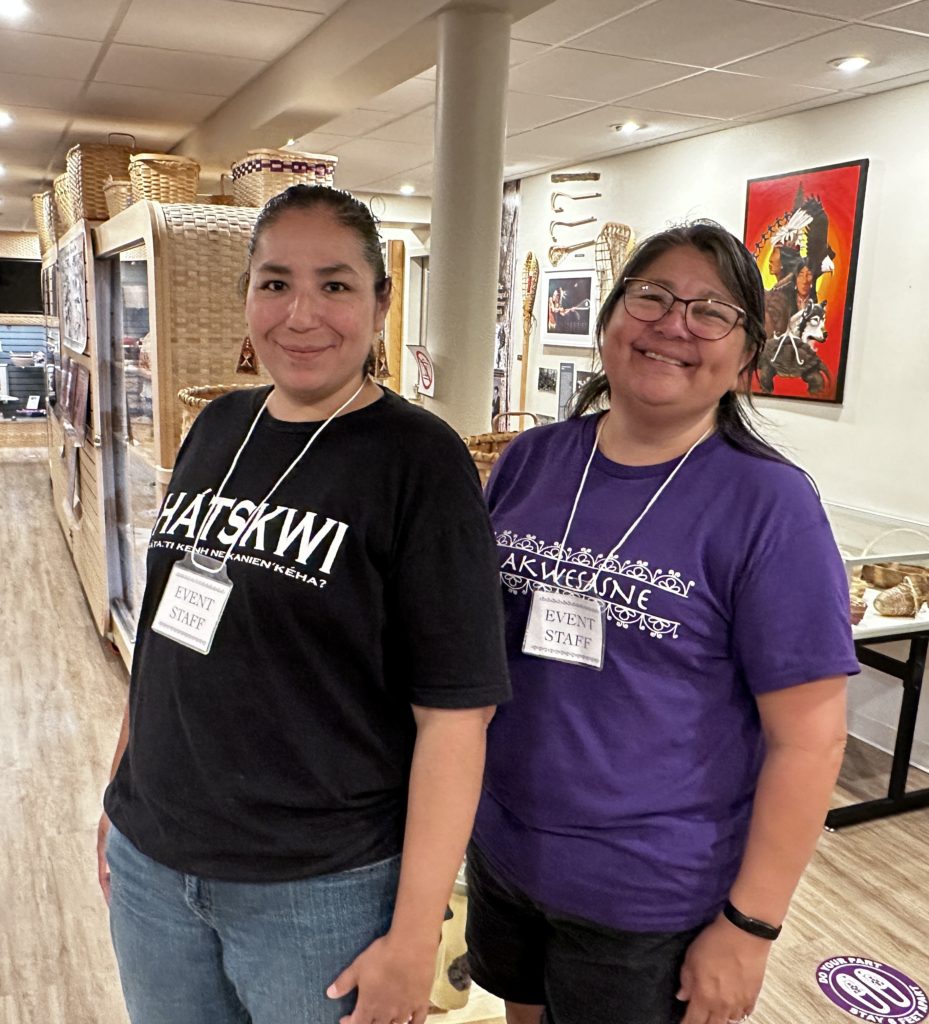
Cultural Manager Marla Jacobs and her team at the Akwesasne Cultural Center (ACC) played a key role in organizing and creating an inclusive space to honor traditional basketry. ACC had its entire basket collection showcased inside, while the rest of the events’ festivities carried on outside.
A few baskets in the collection are well over 100 years old. There are numerous varieties and styles of baskets in the collection including shopping baskets, purses, sowing baskets, knitting baskets, baskets for harvesting, ceremonial baskets, traditional wedding baskets…etc. Every basket made has its purpose.
“It’s been a part of our history for thousands of years. It’s a part of our history, it’s one of the reasons Akwesasne is the way it is. We are known for basket making.” – Marla Jacobs
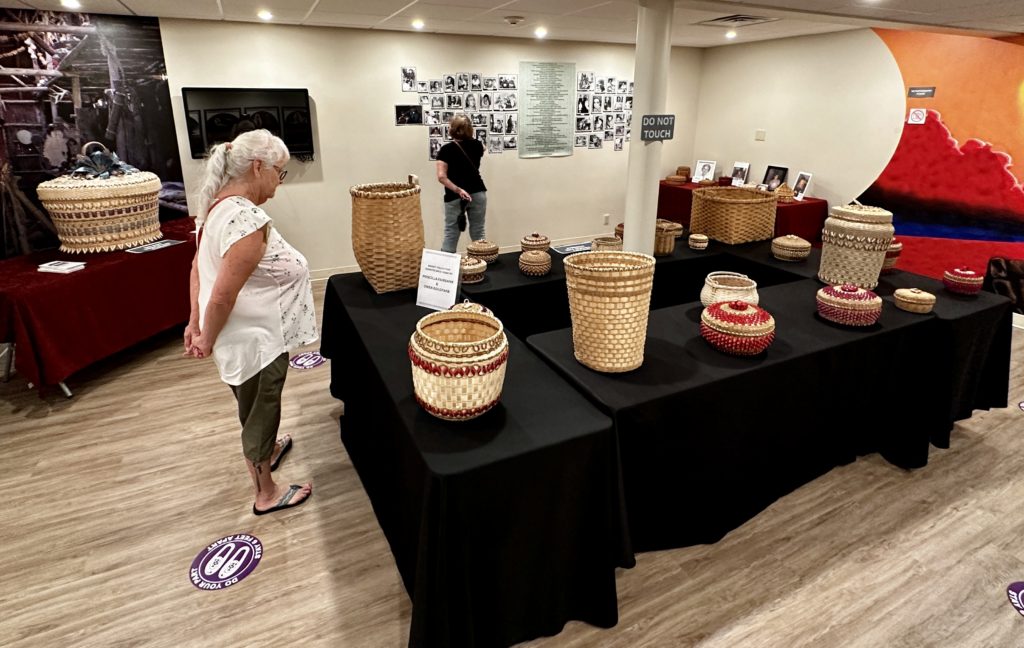
The Fairbank & Goldfarb Basket Collection had a warm welcome home and was displayed for all to admire. The collection was purchased by a Doctor from the Albany, NY area who used to serve the community in the 1980s. He bought baskets from the museum and a nearby gift shop. The collection was very well taken care of and has been maintained. Sadly, all the basketmakers from the collection have since passed away.
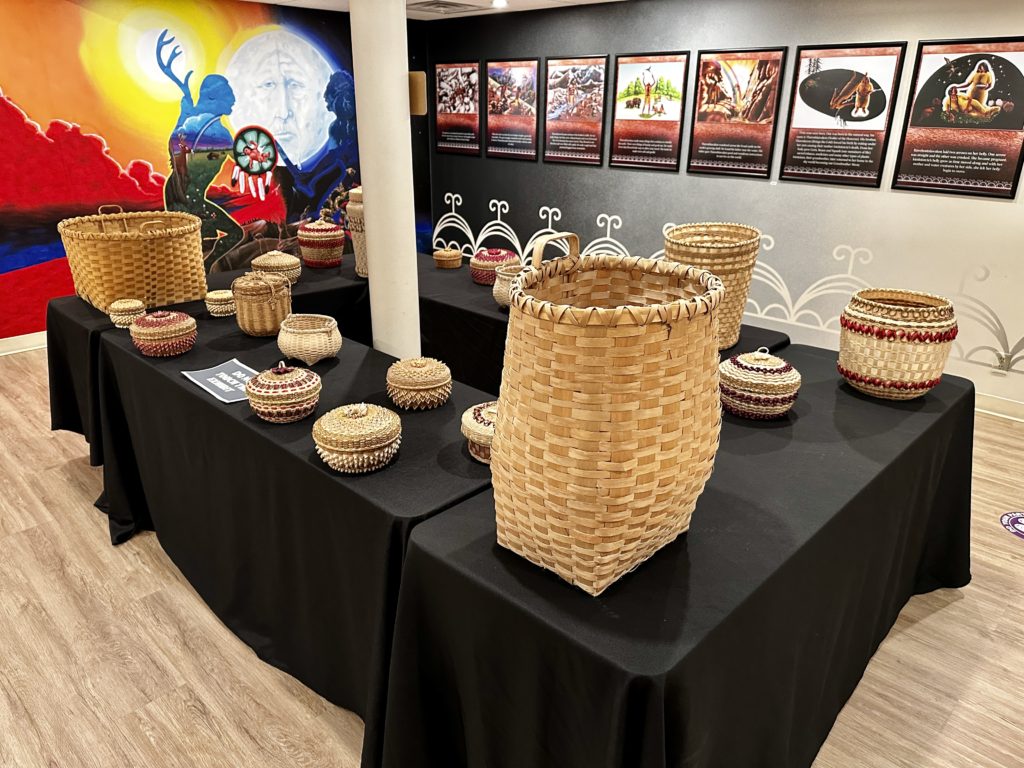
On a carefully curated wall display were all the known basketmakers from Akwesasne, and in the center, a poem written by the late Salli Benedict, who was a well-known basketmaker.
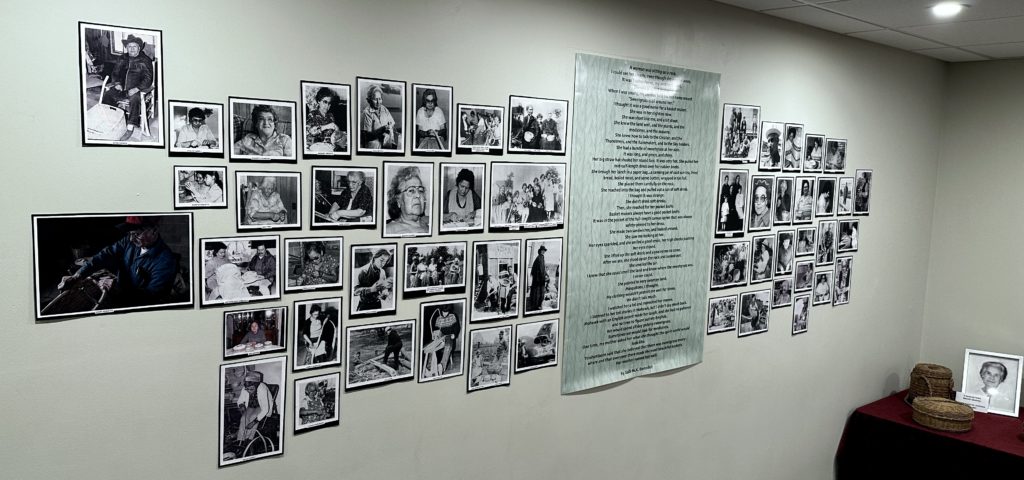
Jacobs felt it was important to showcase the different types of basket-making techniques. Some basketmakers stick to the old ways and the old tools, while others are moving more toward modern tools.
The idea for the festival began with Amberdawn LaFrance, who secured funding through the ‘BIA Tribal Resilience Program’, a grant-based funding.
Staff members at the cultural center, and plenty of volunteers, including a woman who came all the way from California, helped make the basket festival a beautiful reality.
“My favorite thing, when the women singers were out there and we had all three men pounding their log at the same time, I was like ‘this is great, I just want to cry! It’s so beautiful. Our community is so beautiful.’” – Marla Jacobs
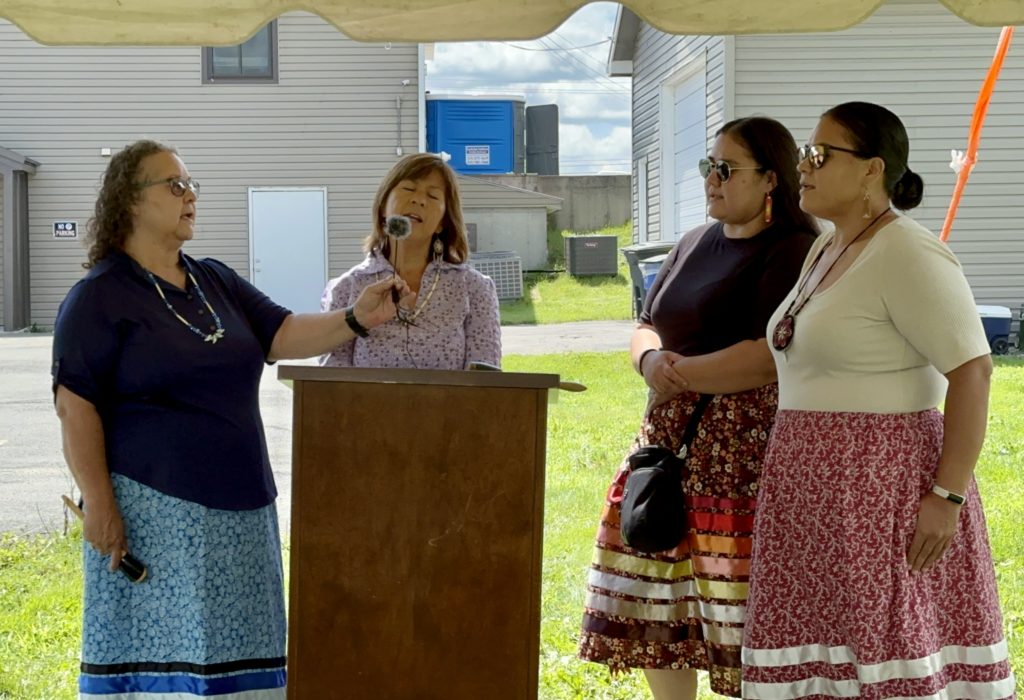
(Left to right) Elizabeth Swamp-Nanticoke, Bear Fox, Tekonwakwenni Nanticoke, and Iawentas Nanticoke.
Historically, community members weren’t allowed to leave the reservation. “Families needed to make money and making baskets is how they survived. At the time baskets were going for .75 cents each, while the shopkeepers who purchased them would sell them for a much steeper price for a better profit,” said Jacobs.
Basketmaking was our livelihood for a long period of time, it’s part of our history.


